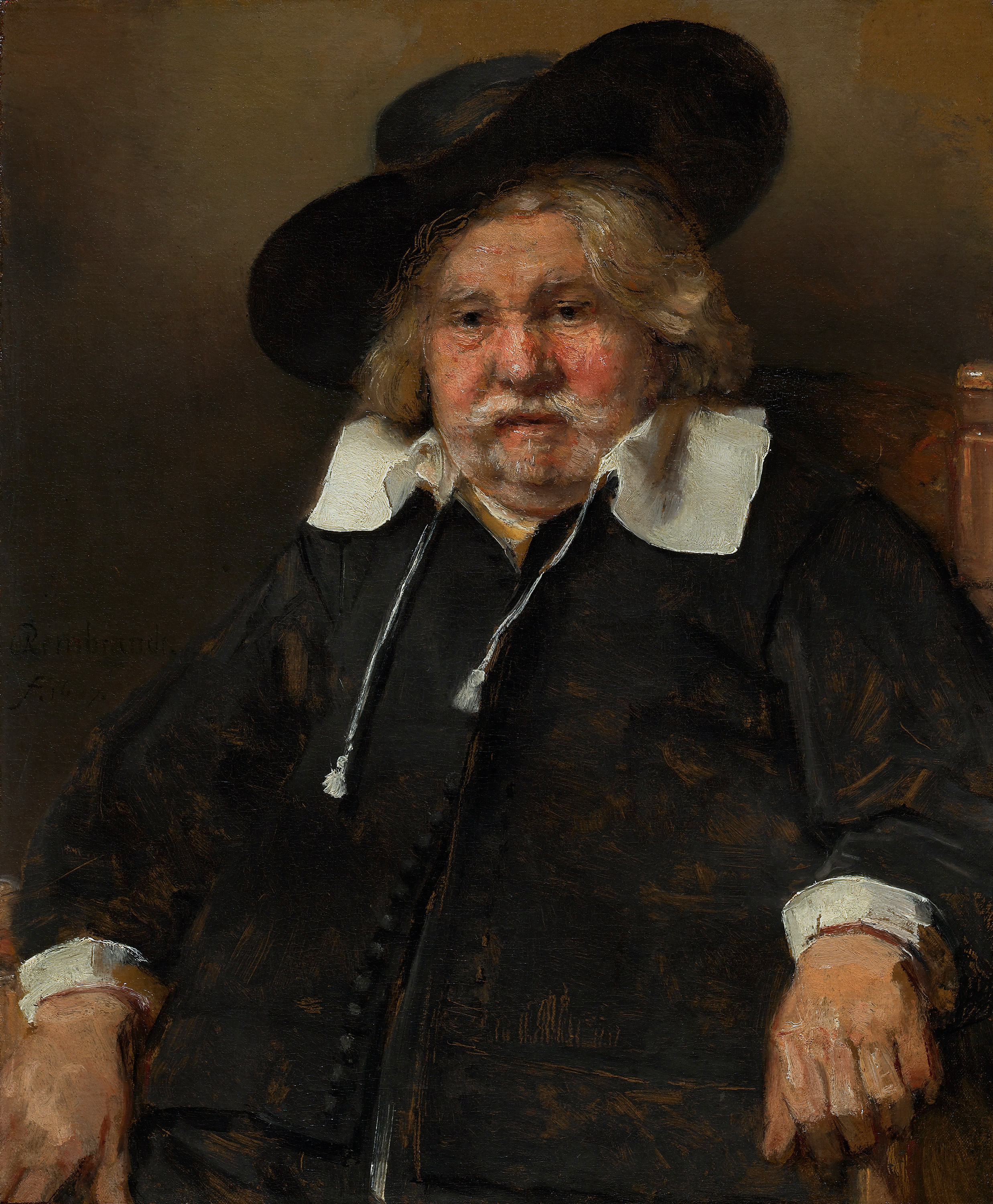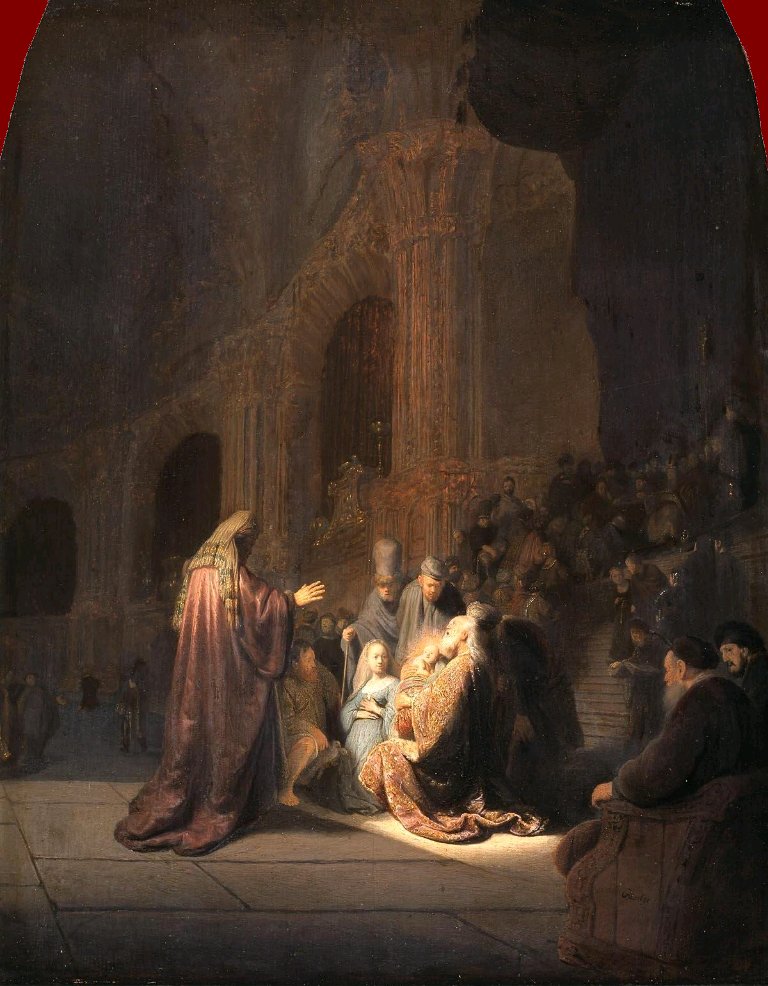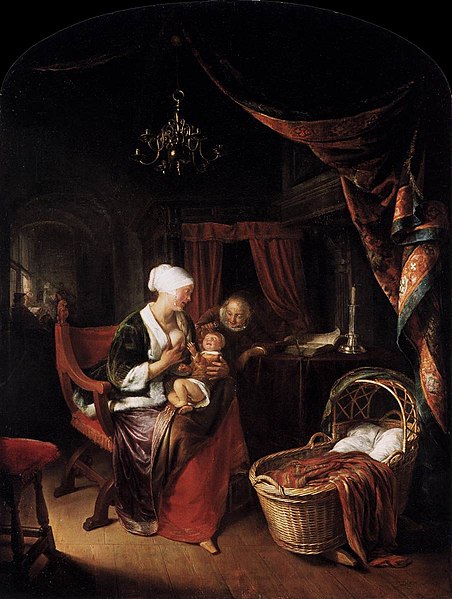Thursday, April 17, 2014
Rembrandt at the Mauritshuis 26 June - 18 September 2006
The Rembrandts in the collection of the Mauritshuis afford a splendid overview of his development from a talented young artist into a great master. While Simeon’s song of praise is an early work, the collection also includes late paintings, such as the Self-portrait of 1669.
With his renowned
The anatomy lesson of Dr Nicolaes Tulp
Rembrandt established his reputation in 1632 as the leading portraitist in Holland. Two centuries later King Willem I acquired this painting for the Mauritshuis.
Thanks to stadholder Willem V, father of Willem I, the collection contained already three Rembrandts, including
Susanna and the elders
and Simeon’s song of praise (below).
Abraham Bredius (1855-1946), director of the Mauritshuis from 1889 until 1909, bequeathed three Rembrandts from his private collection to the museum.
And, in 1999 the Mauritshuis was enriched with a gorgeous late painting by Rembrandt,
the Portrait of an elderly man of 1667.
A painting by Rembrandt of this quality will probably never again come on to the art market.
Recent restorations
In the past decade the Mauritshuis has restored and conducted extensive technical research on almost all of the paintings by Rembrandt in the collection. Thanks to the three recent restorations, virtually all of the Rembrandts in the Mauritshuis can once again be viewed in optimal condition. The paintings Simeon’s song of praise of 1631, Homer of 1663 and the Self-portrait of 1669 have undergone a true metamorphosis: old varnish and discoloured retouchings were removed. The objective was to return Rembrandt’s masterpieces as much as possible to their original state and ensure their condition for the future. During the three recent restorations, an investigation into the original format and appearance of the paintings played a significant role.
Simeon’s song of praise
This painting presents the biblical story of Simeon, in which Rembrandt depicted the Christ Child almost literally as the source of light. In the eighteenth century the painting hung in Het Loo Palace next to
The young mother by Gerrit Dou (also in the Mauritshuis).
At the time, the top corners of the oak panel of Simeon’s song of praise were sawed off in order to function as a pendant to Dou’s work (with a rounded top). The painting was reconstructed approximately 20 years ago. Since then it has been set in a rectangular frame whereby it is presented in its original format (with squared corners). Now only old prints and frames recall the ‘mutilation’ of the painting. After the recent restoration the light in the painting is brilliantly clear and the specific, fine painting style of the early Rembrandt clearly visible. For instance, Mary’s cloak is meticulously rendered with an extremely finely ground azurite (light blue). Simeon’s cloak already gives a foretaste of Rembrandt’s later rough style: he made scratches in the wet paint with the butt end of his brush.
Homer
The eventful history of the Homer complicated its restoration. Rembrandt was commissioned by the Sicilian nobleman Don Antonio Ruffo (1610-1678) to paint a Homer as part of a series with Aristotle and Alexander the Great. In 1783 the painting was damaged by fire as a result of an earthquake in Sicily. The ruddy tonalities of the painting appear to have been largely destroyed by heat, and it now looks far darker than was originally intended. Part of the canvas was also destroyed by the fire. From a description in Ruffo’s inventory it emerges that initially the painting included two pupils to whom the blind Homer was dictating his verses: still visible in the lower right corner are two fingers holding a pen. The damage added to the complexity of the restoration, making it all the more challenging.
Self-portrait
Originating in the year of Rembrandt’s death, 1669, this Self-portrait is probably the last one he made. He looks out at the beholder with a resolute gaze. On the ground layer of the canvas Rembrandt introduced dark borders to frame his likeness, which have been preserved on two sides (top and left). Because of the way the painting is framed, they are usually concealed. To clarify the story of the black borders, the Self-portrait will be shown in a temporary frame for the duration of the presentation. The painted borders on the sides and bottom were used in previous restorations as a stretching edge. These sections were folded out in the recent restoration. The canvas was placed on a larger stretcher so that the original painted surface is once again visible to the extent possible. Rembrandt is now situated higher in the picture plane, whereby his likeness has acquired a more monumental character.
Publication
Accompanying the presentation is a richly illustrated publication on all of the Rembrandts in the Mauritshuis. Rembrandt in the Mauritshuis is the second volume in a series of public-friendly books highlighting the paintings in the Mauritshuis’ permanent collection.






